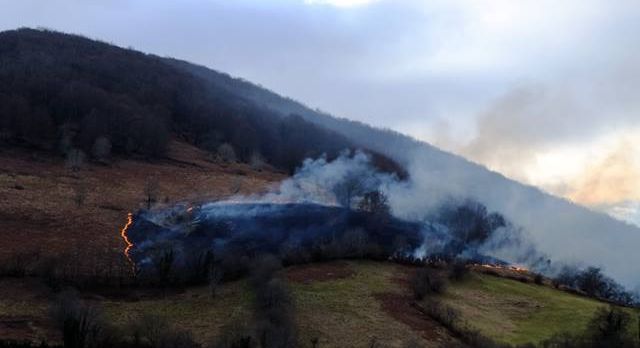
- Every year we have calls in the Basque Country House of Agriculture around the mountain hogueras: people call us rather scared, asking us how it is possible that the mountains are burning, that they leave everything black…”. Iker Elosegi, a member of EHLG, explained that following the leaflet Mendiko Suak in Ipar Euskal Herria there were concerns of several citizens [here you can read the full leaflet in PDF]. The impact of fires on the environment and biodiversity was only investigated in the areas of the Mediterranean climate, and the inhabitants of the culture chamber believe that the consequences are not the same, as the climate is completely different.

Biodiversity and erosion
Mountain fires damage indigenous biodiversity and lead to soil erosion. The great fires in the Mediterranean forests have shown this, but the fires in our forests have not stopped influencing in the same way, according to the leaflet. “Mountain hogueras, which are produced in winter, sometimes every year and every other every 2-3 years, have little fuel, pass fast and do not take such high temperatures,” said the association member.
The aim of the hogueras on the mountain is to cut the cycle of vegetation, as if there were no burning these areas would be torn up and grasslands would be lost. “Biodiversity is not lost with mountain fires. The key is that biodiversity in the forest and in the meadow is different.” From the point of view of erosion, the burns that have occurred in the last five or six thousand years indicate that, unlike the Mediterranean climate, the soil’s fertility has not been lost. “There is no real evidence that erosion is taking place in the lands of our mountains.”
Mountain fires as part of an entire system
EHLG, with its booklet, wanted to encourage reflection and debate on this very special issue. “The mountain fires are good” and “the mountain fires are bad” want to get out of that simplistic dichotomy and discuss the situation in its globality, in its complexity. “These mountain fires are part of a system and a culture, one more element of mountain use: as livestock management is another element.” They are aware, however, of the need for a debate on burning in places where they do not have livestock. “Why not leave some revegetated areas again?” she asks.
However, in the areas that farmers need, the association believes that the issue of fire cannot be transferred to the administration, but must be at the centre. As the forest fires system is necessary to keep livestock alive, the question is, according to them, how many grasses, how many peasants do we want?